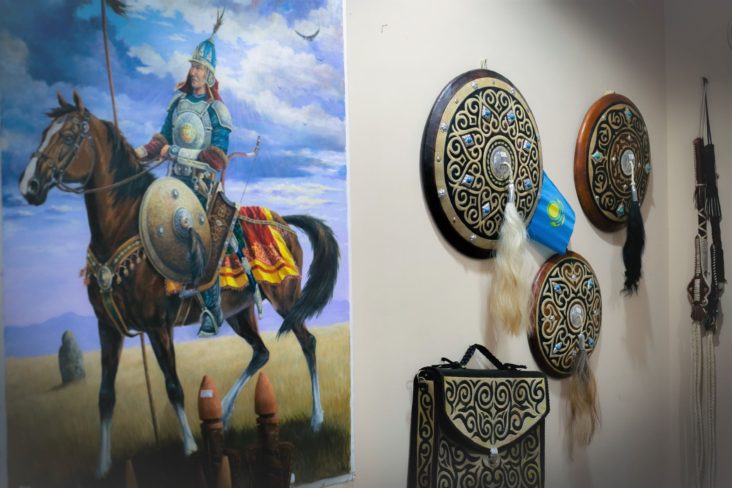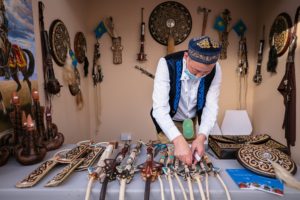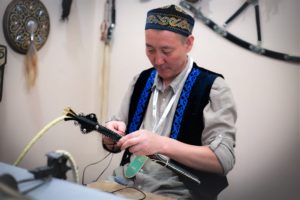Kazakhstan’s Stunning Weapons Tradition Harks Back To Military And Nomadic Past

The 18th edition of Sharjah Heritage Days (SHD), which concludes today(Saturday) in the Heart of Sharjah district, is showcasing the unique customs and traditions of the UAE and 29 other countries.One of participating countries this year is Kazakhstan, which is being celebrated as the festival’s Distinguished Guest.
Think of this Central Asian nation and sprawling steppes, yurts, wild horses and its famous military heritage come to mind. A residual cultural byproduct of that military past, from fighting the Mongols and other invaders, is Kazakhstan’s enduring tradition of weaponry and armour.
At the Kazakhstan pavilion, one stall proudly shows off this old heritage craft. “In our country, there is an old belief that a man must be bold, courageous and brave as a warrior throughout his life,” says AidosBaltayev, a coordinator for the pavilion. The weapons offer something of a mini history lesson on Kazakh life and history. Kamcha, a whip-like tool, was essential in every nomad’s house in the past, inherited from father to son, and often hung on yurts to announce the birth of a baby boy,the presence of a man in the house or a death in battle. Decorated with cowhide in intricate designs, it interestingly features a gazelle leg as ornamentation.
“The weapons also carry a lot of symbolism and meaning,” says Baltayev.The arms in the stall, crafted by expert weapon smithAskatBozymbay include shields, spears, swords, clubs and axes, offering a raw and imposing glimpse into Kazakh medieval life ruled by warfare and valour. Kalkan, the shields decorated with horsetails and shokpar, the clubs with sharp spikes and the rest of the weapons here are all fighting-grade quality, says Bozymbay, who hails from a family that has passed down the craft for generations.
The weapons and armour are also strikingly beautiful, some studded with silver bits and semi-precious stones such as turquoise, carnelian, sandstone and agate, and mostly emblazoned with the popular Kazhak motif of qoshqarmuyiz, a simple variation of ram’s horns. “Today, these weapons are mostly used as décor and home accessories. We try to preserve our traditions but in a modern way,” he adds.



